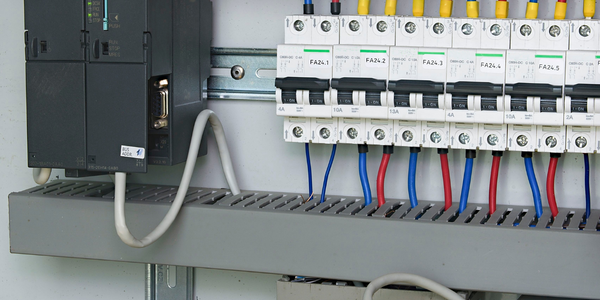Customer Company Size
Large Corporate
Country
- Worldwide
Product
- Anodot
Tech Stack
- Data Analytics
Implementation Scale
- Enterprise-wide Deployment
Impact Metrics
- Cost Savings
- Customer Satisfaction
Technology Category
- Analytics & Modeling - Real Time Analytics
Applicable Industries
- Electronics
Applicable Functions
- Discrete Manufacturing
Use Cases
- Predictive Maintenance
Services
- Data Science Services
About The Customer
The customer is a leading digital printing company that develops, manufactures, and markets digital offset printing presses, proprietary consumables, and workflow solutions. The company has thousands of proprietary digital presses installed worldwide. Its customers are print houses around the world. The business model is that the customers purchase the printing press upfront and also pay per page printed. The company provides the ink and spare parts and most of the support.
The Challenge
The digital printing company sells commercial digital presses for digital printing of items such as pictures, labels, large format prints, etc. Its customers are print houses around the world. The business model is that the customers purchase the printing press up front and also pay per page printed. The company provides the ink and spare parts and most of the support. Whenever a press is down, the company loses both in revenue (due to fewer prints) and in support costs. Customer satisfaction also suffers as a result. Typically, whenever there was a problem, the customers’ first instinct would be to start replacing spare parts that the company provides, and only afterwards they might call support. The initial support call costs the company several hundred dollars, and still may not resolve the problem. If an issue persisted or recurred, an expert would be sent (at the cost to the company of a few thousands of dollars per call). In this process, the company lost revenue from presses that were malfunctioning, paid a lot in support and parts, and also eroded its customer satisfaction.
The Solution
Anodot helped the company by automatically analyzing the hardware and software data that the company collects from each press – e.g. measurements of ink level/temperatures, engine speeds, voltages across various components, error events, user events, and more. Anodot detects potential problems early, allowing the company to provide proactive support. Anodot receives a constant stream of metrics from the company directly from its presses around the world. By closely monitoring these data streams, Anodot can identify which presses are in need of service – and what type of service – long before the customer even notices a problem. With its automated alerts from Anodot, the company can deal with printer problems early, keeping the presses (and its revenue stream) running smoothly, reducing its support costs and keeping customers happy.
Operational Impact

Case Study missing?
Start adding your own!
Register with your work email and create a new case study profile for your business.
Related Case Studies.

Case Study
Remote Temperature Monitoring of Perishable Goods Saves Money
RMONI was facing temperature monitoring challenges in a cold chain business. A cold chain must be established and maintained to ensure goods have been properly refrigerated during every step of the process, making temperature monitoring a critical business function. Manual registration practice can be very costly, labor intensive and prone to mistakes.

Case Study
Predictive maintenance in Schneider Electric
Schneider Electric Le Vaudreuil factory in France is recognized by the World Economic Forum as one of the world’s top nine most advanced “lighthouse” sites, applying Fourth Industrial Revolution technologies at large scale. It was experiencing machine-health and unplanned downtime issues on a critical machine within their manufacturing process. They were looking for a solution that could easily leverage existing machine data feeds, be used by machine operators without requiring complex setup or extensive training, and with a fast return on investment.

Case Study
Cloud Solution for Energy Management Platform-Schneider Electric
Schneider Electric required a cloud solution for its energy management platform to manage high computational operations, which were essential for catering to client requirements. As the business involves storage and analysis of huge amounts of data, the company also needed a convenient and scalable storage solution to facilitate operations efficiently.

Case Study
Leveraging the IoT to Gain a Competitive Edge in International Competition
Many large manufacturers in and outside Japan are competing for larger market share in the same space, expecting a growing demand for projectors in the areas of entertainment, which requires glamor and strong visual performance as well as digital signage that can attract people’s attention. “It is becoming more and more difficult to differentiate ourselves with stand-alone hardware products,” says Kazuyuki Kitagawa, Director of Service & Support at Panasonic AVC Networks. “In order for Panasonic to grow market share and overall business, it is essential for us to develop solutions that deliver significant added value.” Panasonic believes projection failure and quality deterioration should never happen. This is what and has driven them to make their projectors IoT-enabled. More specifically, Panasonic has developed a system that collects data from projectors, visualizes detailed operational statuses, and predicts issues and address them before failure occurs. Their projectors are embedded with a variety of sensors that measure power supply, voltage, video input/ output signals, intake/exhaust air temperatures, cooling fan operations, and light bulb operating time. These sensors have been used to make the projector more intelligent, automatically suspending operation when the temperature rises excessively, and automatically switching light bulbs. Although this was a great first step, Panasonic projectors were still not equipped with any capability to send the data over a network.









